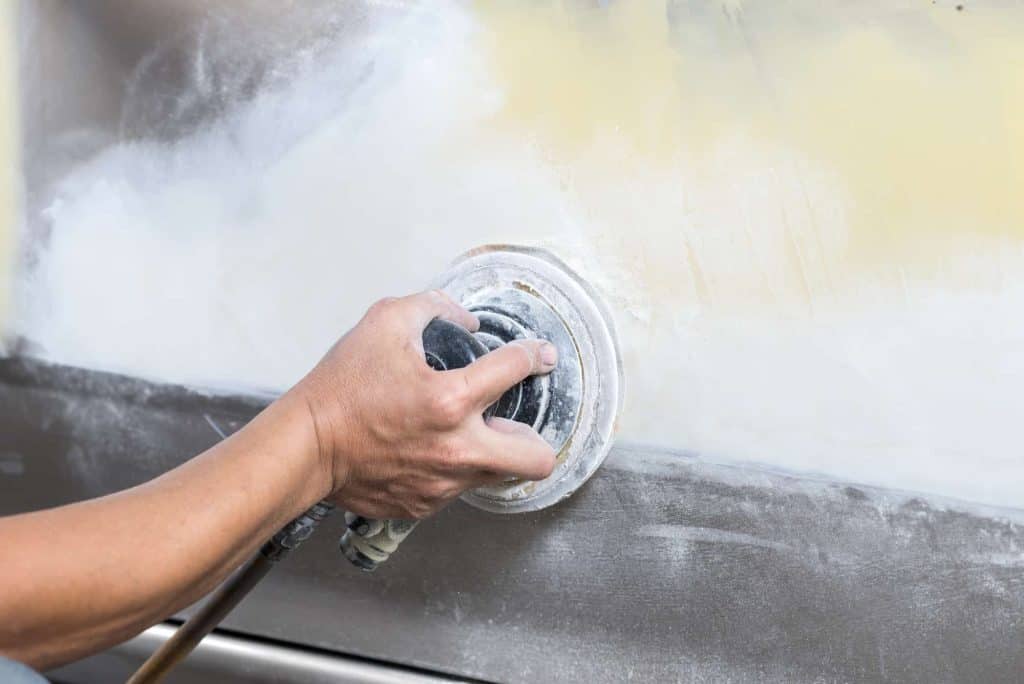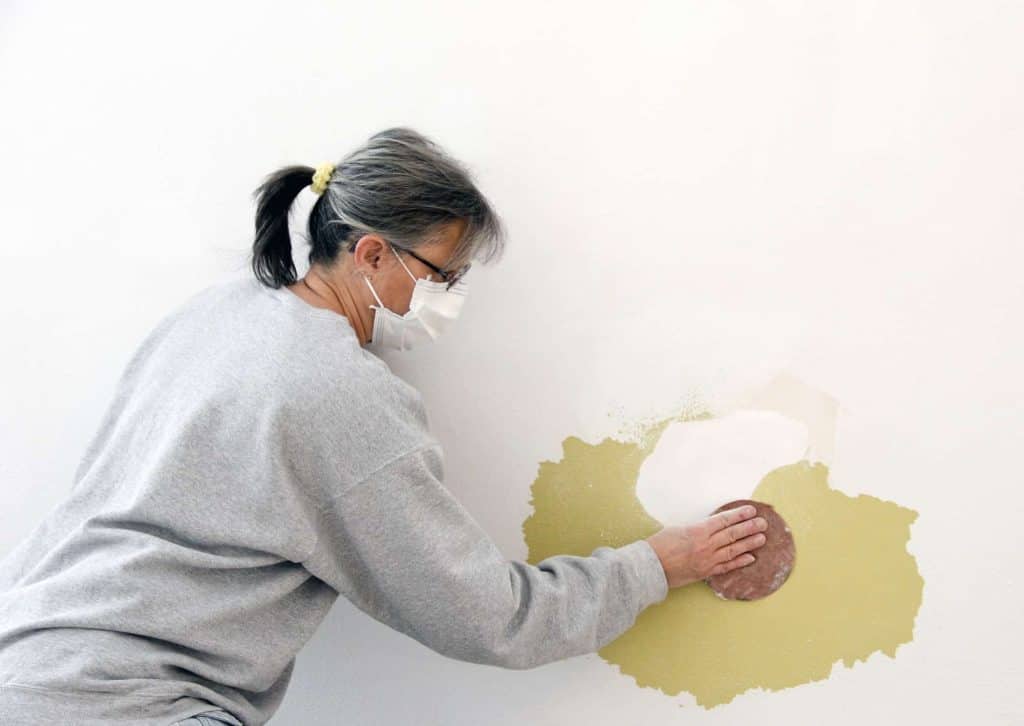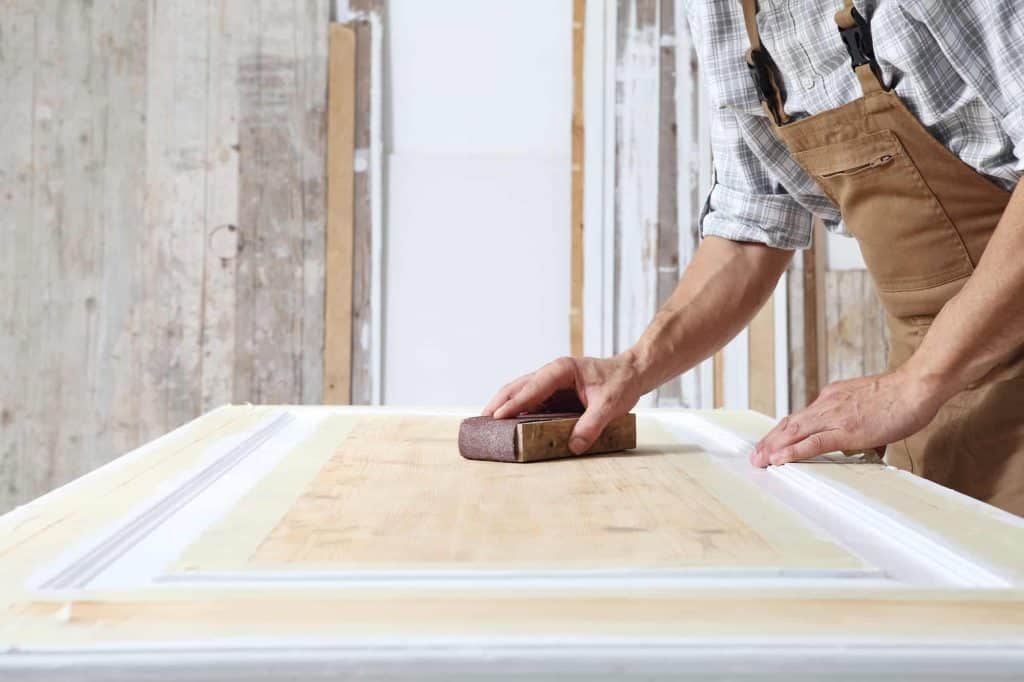A beautifully finished surface is an excellent reward for the hard work that comes with a remodel or makeover. Sanding is an important part of the finishing process—which is why the debate on sanding between paints or stains is a vital conversation.
Sanding between coats of paint or stain is generally a good idea because, in many cases, it helps the chemical components in paint or stain to bond and deliver a flush finish as you apply multiple coats. However, there are scenarios where putting away the sandpaper between coats makes more sense.
In this article, you’ll learn all you need to know about sanding between coats while painting or staining.
Do You Have to Sand Between Coats of Paint?
Sanding between coats of paint is generally a good idea. To help you understand why we’ll look at what sanding between coats does.
When applying paint, you’re bound to get defects like dust, sags, drips, etc. Sanding between coats is a good way to get rid of the imperfections. However, as you’re getting rid of the defects, you’re also making the surface a bit rough, allowing better adhesion (source: Inspirations Paint).
You’ll need a rough surface, especially when working with high gloss paints such as enamel and polyurethane. Chalk paint, for example, has to be applied in several layers. Sanding between each coat is important to avoid a blotchy or streaky finish (source: HGTV).

Spray painting a car is another scenario where you need to sand between coats. The paint’s composition is such that it has a sheen that reflects light when dry, emphasizing any imperfections on the surface, including nicks, dents, and scratches (source: Popular Mechanics). Sanding between coats of paint makes getting a smooth coat easier.
However, when you’re working with lacquer paints, you don’t necessarily have to sand between coats.
This is because lacquer doesn’t accumulate in layers. Instead of building in layers, it will melt into itself. While other types of paint cure, it dries. So, unless you’ve got visible imperfections to smoothen out, sanding between coats of lacquer won’t make any much difference.
So, keep in mind that sanding is a good way to get rid of imperfections and also make the surface more receptive to paint.
Also, remember that sanding is often most recommended if you’re working with high-gloss paints.

Sanding Between Coats While Painting Walls
Knowing when to sand between coats while painting a wall can be the difference between doing a professional-grade job and knocking up a shoddy finish.
To guide you, here are scenarios where you should sand between coats:
Roller Accumulation
If you find the painted wall looking textured or bumpy regardless of how many coats you apply, you’re dealing with roller build-up.
It shows you’ve got far too much paint on the roller. You’ll notice this problem once the wall is dry. Sanding the wall is a good way to get rid of the textures before applying another coat of paint (with another roller) (source: Value Painting Tenn).
Using Latex Paint Over Oil-Based Paint
You should sand between coats while painting a wall if you are using latex paint over old oil-based paint. The smooth surface of oil-based paint means that other types of paint—especially latex—find it difficult to stick.
Lightly sanding between coats makes it easier for the new paint to adhere to the surface instead of running off due to traces of the oil-based paint remaining on the wall after the initial sanding.
Not sure if you’re dealing with oil paint? Wash a small portion of the wall with warm water and detergent, and rub the washed surface with some cotton dipped in rubbing alcohol. If the paint comes off on the cotton, you don’t have oil-based paint on the wall (source: Seattle Pi).
If you don’t find any imperfections, textures, or roller accumulation while painting your walls, you don’t have to spend time sanding between coats.

Sanding Between Coats While Painting Doors
Painting a door is often dicey. Regardless of how careful you are during the process, you’ll find bubbles and other impurities like lint, dust, and ridges on the fresh coat of paint.
Hand sanding between coats of paint increases your chances of getting the smoothest possible topcoat. Alternatively, you can save yourself a lot of time with a sander suitable for doors.
Remember, you’re only sanding lightly to make the surface smooth again. You can complete the sanding process in five minutes. Once done, vacuum and wipe the door with a damp cloth to get rid of dust before applying the next coat of paint.
Sanding Between Coats While Painting Cabinets or Furniture
Just like doors, you have to sand between coats when painting your cabinets and other such furniture pieces.
After you are done sanding the surface, clean off the dust before applying the next layer of paint. Always sand lightly to avoid sanding off the last coat of paint. Pay attention to areas with paint build-up or impurities.
How Long Should You Wait Between Coats?
The length of time between coats will vary depending on the type of paint you’re working with. While chalk paint manufacturers like Annie Sloan recommend waiting 24 hours between coats, other polyurethane paint manufacturers have products that are ready for another coat within an hour. With lacquer, you should ideally wait a couple of days.
Which Grit sandpaper Should I use to Sand Between Coats?
You should ensure you’re working with the right grade of sandpaper when sanding between coats. Choosing a grit that’s too fine means spending more time than necessary on the project—especially if the last coat has many problem areas to rectify.
If you use a sandpaper grit that’s too coarse, you can scratch up the surface deeper than necessary, leading to another round of sanding with a finer grit and extra coats of paint.
You should use a grit that is just enough to scuff the surface you’re working on. The ideal grit to use for sanding between coats will range from 220-400. You can go as high as 600, depending on the surface you’re working on.
Do I need to Sand Self-Etching Primer?
Sanding primer is common for most restoration or bodyworks projects. However, self-etching primers are different. These products have an acid base, so most manufacturers strictly warn against sanding the primer directly (source: Autos).
To sand self-etching primer, you need to apply two epoxy or urethane primer coats after the self-etching primer dries, then sand.

Should I Sand Between Coats of Stain or After Staining?
When staining decks, fences, and other wooden surfaces, you may be caught between two minds on whether to sand between coats of stain or not. What’s best?
If you want the best possible finish and the right level of bonding between two coats of stain, you should sand between coats of stain. This is especially true with a water-based stain which can raise the wood grain, making it look less appealing without sanding.
When you sand a coat of stain, you will find a blotchy appearance, but this will mostly disappear after adding another coat of paint to the surface.
When sanding between coats of water-based stain, you can use 80-120 grit sandpaper, working your way up to finer grits if necessary.
With oil-based stain, you don’t have to sand between coats in most cases. The stain’s composition gives you more time to wipe off any extra stains or imperfections easily using a rag.
For polyurethane stain, you can sand between coats using finer grit sandpaper like 320 or 400.
Do You Need to Sand After Staining?
Once you’re done staining your fences or deck, you may be wondering if it makes sense to sand again. In many cases, you don’t need to—especially if you’ve sanded between coats of stain.
One of the main reasons for sanding again after staining is because of the prospects of grain-raising. However, this shouldn’t be a problem with multiple stain coats.
Alternatively, you can deal with this problem even before staining by wetting the wood surface evenly after the first sanding, then sand it again when dry before applying the first coat of stain.
With this, you’ll only need to sand after you apply the first coat of finish or after you notice any imperfections when you’ve applied the second or third coats of finish.
Do You Need to Sand Between Coats of Gel Stain?
You need to sand the surface you’re working on before applying gel stain. You can do this with steel wool or different finer grit sandpaper, starting with 80 grit and ending with 180 or 220 grit.
Once done, you can apply the first coat of gel stain. You don’t need to sand between coats of gel stain where multiple coats are required. You can wipe off any imperfections with a rag.
Should You Use a Sanding Sealer Before Staining?
It’s not compulsory to use a sanding sealer before staining (source: Rockler). It can save you time in some situations, but at other times, it’s unnecessary.
If you’re working on surfaces that can absorb the first few coats of lacquer too easily, such as spruce, poplar, or cedar, you’ll need a sanding sealer. Otherwise, you don’t need to use it.
I hope you found this guide useful on whether or not you should sand between stain or paint. In most cases, it’s a good idea – it’s the sort of step you shouldn’t skip if you really want a professional finish on your projects!










